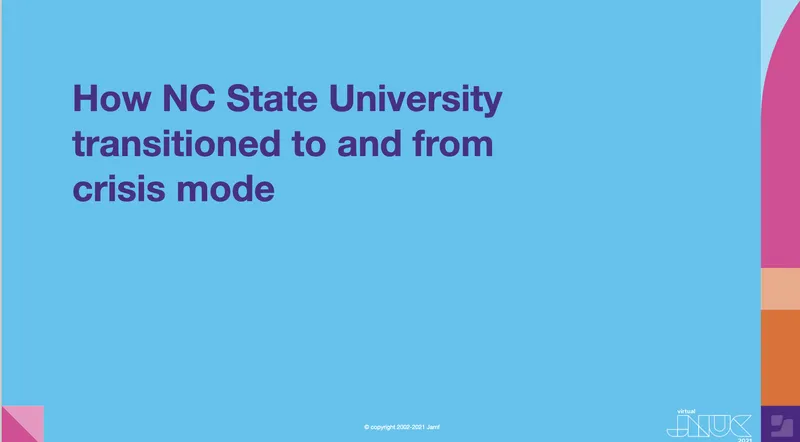When online classes became the only option for educators worldwide during the pandemic, North Carolina (NC) State University pivoted to fully remote education, providing devices for all university staff and faculty through the NC State University Libraries lending program.
Z-day: zero touch begins today
At the start of the pandemic, even though they had access to Jamf’s suite of tools for Apple device management, NC State University was still using a very labor-intensive device deployment for remote education. When it was announced they would be moving to all remote learning, they had 72 hours to make zero touch a reality.
In the process, they changed what had been a convenience offering into a hands-off, remote and automated deployment operation to support the 34,000+ user base, all while reducing their on-site staff from a team of six to two.
To meet broader needs, with more software than previously available, coordinated deployments became the new standard. Users needed installs of university-supported software, on the devices they wanted when they wanted it.
Keeping track: who has what and what’s happening to it?
As software sets expanded, so did inventory management and reporting demands. While they could rely on the flawless inventory reporting of Jamf Pro for Apple devices, a complete inventory of devices and operating systems was a challenge. The solution: an ingenious integration of the Jamf API with Google Cloud Bucket and Google Data Studio.
About those updates
As regularly as night follows day, software updates follow installations – and another challenge to remote tracking and deployment. Once again, they figured out an automated solution involving Jamf Pro’s support of Webhooks and Google Cloud functions. Since their deployment of innovative “Cloudy Patch Notifiers,” the list of practical uses for them continues to grow.
Back to the future
Jenkins and Allen report that harnessing the power of Jamf for not only zero-touch device and software deployment but also streamlined reporting and patching, promises a future with less work, more timely data and better focus on the client.
See how Jamf can empower your organization
by Category:
Have market trends, Apple updates and Jamf news delivered directly to your inbox.
To learn more about how we collect, use, disclose, transfer, and store your information, please visit our Privacy Policy.






